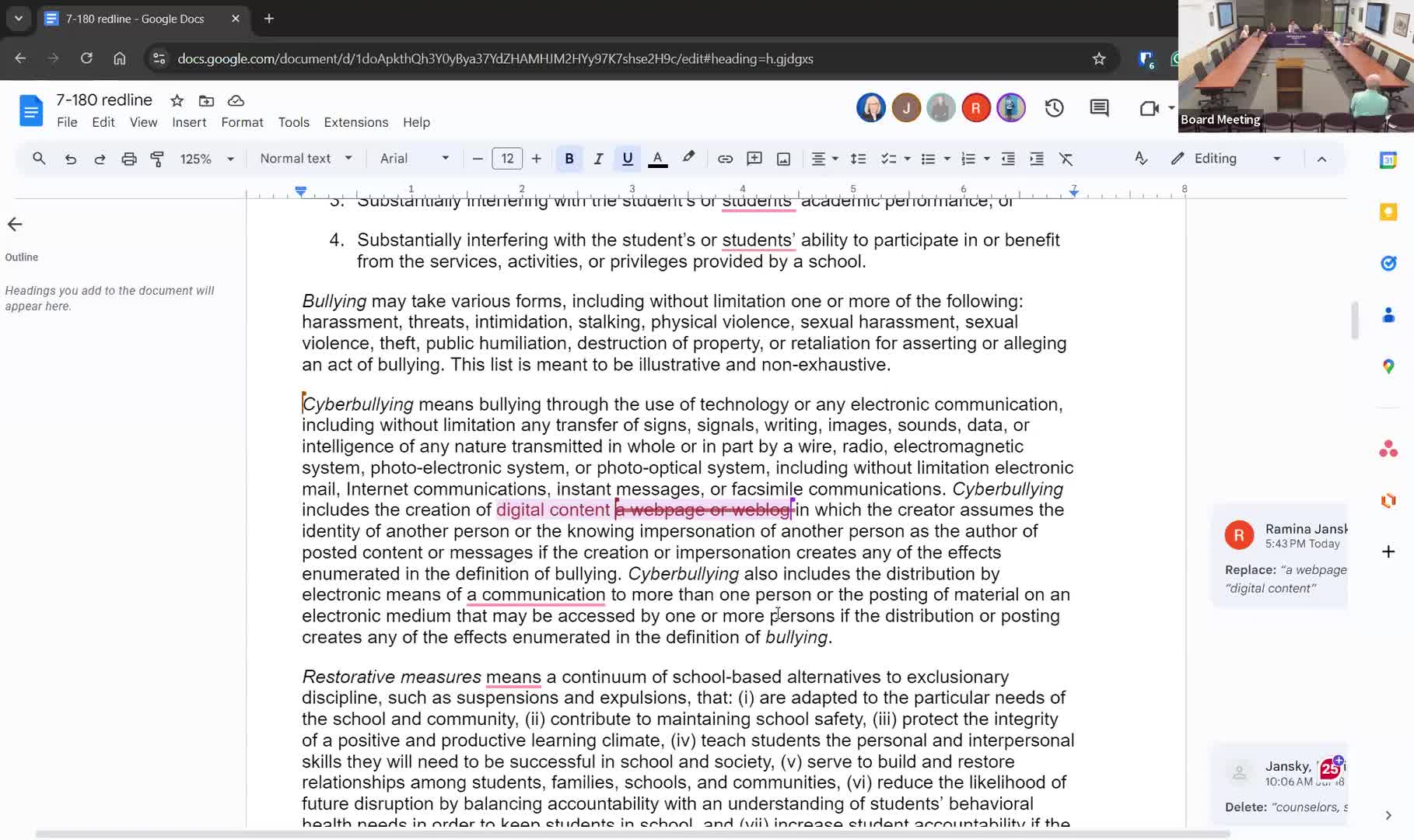New policy targets digital bullying and misinformation
July 30, 2024 | Twp HSD 113, School Boards, Illinois

This article was created by AI summarizing key points discussed. AI makes mistakes, so for full details and context, please refer to the video of the full meeting. Please report any errors so we can fix them. Report an error »

In a recent government meeting, officials engaged in a detailed discussion regarding the definition and implications of cyberbullying, particularly in the context of digital content creation and misinformation. The dialogue highlighted the complexities of defining cyberbullying, especially when it involves the impersonation of individuals or events online.
Participants emphasized that cyberbullying should encompass not only the direct impersonation of individuals but also the dissemination of false information that could harm others. The conversation pointed out that the impact of such actions is primarily felt by individuals rather than the events themselves, underscoring the need for clarity in policy language.
One key point raised was the necessity to ensure that the definition of cyberbullying includes scenarios where misinformation about events could lead to public humiliation or psychological harm. The group acknowledged that while the current policy captures many aspects of bullying, there is room for more specificity regarding the creation of harmful digital content, including deepfakes.
Additionally, the meeting addressed the intersection of cyberbullying and other forms of misconduct, ensuring that the policies in place adequately cover various aggressive behaviors, including those that occur through school networks. The discussion concluded with a consensus that existing definitions and policies sufficiently address the core issues of bullying, while also recognizing the need for ongoing evaluation and potential revisions to adapt to evolving digital landscapes.
The meeting also touched on administrative changes, including the rewording of references to school counselors and social workers, reflecting a commitment to providing adequate support for students affected by bullying.
Participants emphasized that cyberbullying should encompass not only the direct impersonation of individuals but also the dissemination of false information that could harm others. The conversation pointed out that the impact of such actions is primarily felt by individuals rather than the events themselves, underscoring the need for clarity in policy language.
One key point raised was the necessity to ensure that the definition of cyberbullying includes scenarios where misinformation about events could lead to public humiliation or psychological harm. The group acknowledged that while the current policy captures many aspects of bullying, there is room for more specificity regarding the creation of harmful digital content, including deepfakes.
Additionally, the meeting addressed the intersection of cyberbullying and other forms of misconduct, ensuring that the policies in place adequately cover various aggressive behaviors, including those that occur through school networks. The discussion concluded with a consensus that existing definitions and policies sufficiently address the core issues of bullying, while also recognizing the need for ongoing evaluation and potential revisions to adapt to evolving digital landscapes.
The meeting also touched on administrative changes, including the rewording of references to school counselors and social workers, reflecting a commitment to providing adequate support for students affected by bullying.
View full meeting
This article is based on a recent meeting—watch the full video and explore the complete transcript for deeper insights into the discussion.
View full meeting
